Explore Historical Sites Around Peru
Here are some popular questions about Peru's historical sites and the Amazon Rain Forest:
- What is history behind Machu Picchu?
- What is the history behind the Inca Trail?
- The Nazca Lines: A Mystery of the Ancient World
- The Chimu Culture: A Fascinating Chapter in Peru's History
- Ollantaytambo: Exploring a Fascinating Inca Fortress
- Cusco City: Exploring the Heart of the Inca Empire
- Pachacamac: Exploring the Sacred Site of the Andean Gods
- Chan Chan: Exploring the Capital of the Chimu Empire
- Chavín de Huantar: Exploring the Ancient Spiritual Center of Peru
- The Peruvian Amazon Rainforest: A Natural Wonder
What is history behind Machu Picchu?

Machu Picchu is one of the most fascinating and iconic historical sites in Peru, and even the world. Located high in the Andes Mountains, this ancient Inca city is shrouded in mystery, and its history is still the subject of much speculation and debate. In this article, we will delve into the history behind Machu Picchu, exploring what we know about this remarkable site and the secrets that it still holds.
The History of Machu Picchu
Machu Picchu was built by the Incas in the 15th century, during the height of their empire. It is believed that the site was originally used as a royal estate for the Inca emperor Pachacuti, who is credited with expanding the empire and bringing it to its greatest extent. According to Inca mythology, Pachacuti was instructed by the gods to build a great city in the clouds, and it is said that Machu Picchu was built as a tribute to this divine mandate.
For centuries, Machu Picchu lay hidden from the world, nestled in the mountains and surrounded by dense jungle. It was only in 1911 that the site was rediscovered by American explorer Hiram Bingham, who was led to the site by a local farmer. Bingham initially believed that he had discovered the legendary "lost city of the Incas", and his discovery quickly captured the world's imagination.
Despite its fame, however, much about Machu Picchu remains unknown. While archaeologists have uncovered a great deal about the site, including its impressive stonework and agricultural terraces, many questions about its purpose and history remain unanswered.
The Mystery of Machu Picchu
One of the most enduring mysteries surrounding Machu Picchu is why the site was built in such a remote location. While the site is certainly impressive, it is also difficult to access, and its location makes it vulnerable to landslides, earthquakes, and other natural disasters. Some researchers have suggested that Machu Picchu may have been built as a place of worship or pilgrimage, while others have proposed that it was intended as a fortress or a retreat for the Inca emperor.
Another mystery surrounding Machu Picchu is why the site was abandoned. While it is believed that the site was occupied for only a few decades before it was abandoned, the reasons for this remain unclear. Some researchers have suggested that the site was abandoned due to disease or famine, while others have proposed that it was abandoned as a result of political or environmental factors.
Despite these mysteries, Machu Picchu remains a marvel of ancient engineering and architecture. The site is home to many impressive structures, including temples, palaces, and agricultural terraces, and its location in the mountains provides stunning views of the surrounding landscape. Machu Picchu is now a UNESCO World Heritage site and a popular destination for tourists from around the world.
In conclusion, Machu Picchu is a testament to the ingenuity and creativity of the Inca civilization, and its history continues to fascinate and intrigue people today. While much about the site remains a mystery, its impressive stonework and stunning location are a testament to the skill and craftsmanship of its builders. Whether you're a history buff or simply looking for a remarkable travel destination, Machu Picchu is not to be missed.
What is the history behind the Inca Trail?
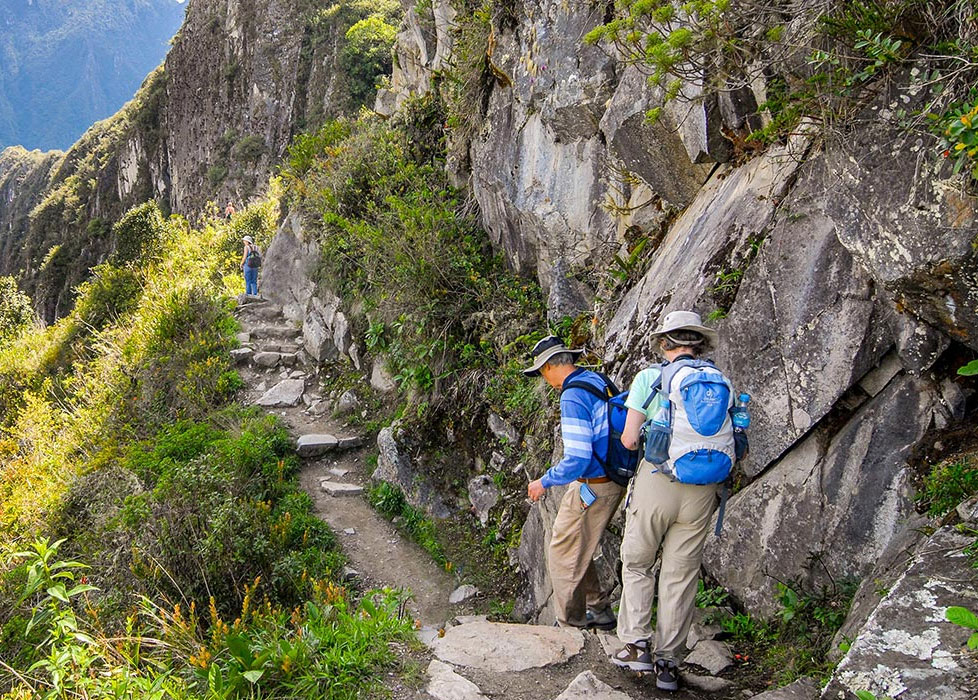
The Inca Trail: A Fascinating History of a Legendary Pathway
The Inca Trail is one of the most famous and well-known trekking routes in the world, and it attracts thousands of visitors every year who come to hike the ancient pathway and explore the stunning natural beauty of the Andean region. But what is the history behind this legendary trail, and what makes it such an important part of Peru's rich cultural heritage?
The Inca Trail was originally built by the Incas, a pre-Columbian civilization that ruled over much of the Andean region in the 15th and 16th centuries. The trail was an important part of the Inca road system, which stretched across thousands of miles and connected the various regions of the empire.
The Inca Trail was used for a variety of purposes, including religious pilgrimages, military campaigns, and administrative tasks. It was also an important trade route, connecting the highland regions of the Andes with the lowland regions of the Amazon rainforest.
One of the most impressive features of the Inca Trail is its remarkable engineering and construction. The trail was built using a variety of techniques, including cut and fill, paving, and the use of retaining walls and drainage systems. The trail is also home to a number of impressive structures, including bridges, staircases, and terraces, which were built to help travelers navigate the steep and rugged terrain.
The Inca Trail is also significant for its cultural and historical value. The trail is home to a number of important archaeological sites, including the ancient Inca city of Machu Picchu, which is considered to be one of the greatest architectural and engineering achievements of the pre-Columbian era. Machu Picchu is a UNESCO World Heritage site and is widely recognized as one of the most important and impressive archaeological sites in the world.
Today, the Inca Trail remains an important part of Peru's cultural heritage, attracting visitors from around the world who come to explore the history and beauty of the Andean region. The trail is also an important part of Peru's tourism industry, providing economic opportunities for local communities and supporting the conservation efforts that are needed to protect this important cultural and natural resource.
In conclusion, the Inca Trail is a legendary pathway with a fascinating history that spans centuries. From its impressive engineering and construction to its cultural and historical significance, the Inca Trail is a remarkable achievement of the pre-Columbian era and remains an important part of Peru's rich cultural heritage today.
The Nazca Lines: A Mystery of the Ancient World

The Nazca Lines are a series of ancient geoglyphs located in the Nazca Desert of Peru. These impressive works of art were created by the Nazca culture between 500 BCE and 500 CE and have been a source of fascination and speculation for centuries. In this article, we will explore the history and mystery of the Nazca Lines, examining what we know about them and the many theories that surround them.
The History of the Nazca Lines
The Nazca Lines are a series of over 800 geoglyphs that cover an area of about 500 square kilometers in the Nazca Desert. These geoglyphs, which are best viewed from the air, take the form of various designs, including animals, plants, and geometric shapes. The largest of these designs is over 1,200 feet long, and many of the designs are incredibly detailed and intricate.
The Nazca culture, which is believed to have created the lines, was a pre-Columbian civilization that thrived in the region between 100 BCE and 800 CE. While little is known about this culture, it is believed that they created the lines using simple tools, such as ropes and wooden stakes, and that they may have used hot-air balloons to view their work from above.
The Mystery of the Nazca Lines
Despite their impressive size and detail, the purpose of the Nazca Lines remains a mystery. While some researchers believe that the lines were created for religious or ceremonial purposes, others have proposed more speculative theories, including that the lines were created as landing strips for ancient aliens or that they represent a vast astronomical calendar.
One of the most enduring mysteries of the Nazca Lines is how they were created with such precision. While the Nazca culture is known for its impressive pottery and textiles, the creation of such intricate geoglyphs is an impressive feat of engineering and design. Some researchers have suggested that the Nazca people may have used simple surveying tools, such as ropes and stakes, to create the lines, while others have proposed that they may have used more sophisticated techniques, such as water levels or sighting instruments.
Another mystery surrounding the Nazca Lines is how they have survived for so long. The Nazca Desert is known for its harsh conditions, including high winds and frequent sandstorms, and yet the lines have remained largely intact for over a thousand years. Some researchers have suggested that the lines may have been intentionally buried or covered in order to protect them from the elements, while others have proposed that they may have been created using materials that are resistant to erosion, such as volcanic rock or hardened clay.
In conclusion, the Nazca Lines are a remarkable example of the ingenuity and creativity of ancient civilizations. While much about these impressive geoglyphs remains a mystery, their beauty and mystery continue to captivate people today. Whether you believe that they were created for religious or ceremonial purposes or that they represent something more mysterious, the Nazca Lines are an incredible testament to the skills and abilities of the ancient Nazca culture.
The Chimu Culture: A Fascinating Chapter in Peru's History

The Chimu culture was a pre-Columbian civilization that flourished in the coastal region of Peru between the 9th and 15th centuries CE. The Chimu people are known for their impressive art, architecture, and engineering, as well as their skilled metalworking and irrigation systems. In this article, we will explore the history and legacy of the Chimu culture, examining what we know about this remarkable civilization and its impact on Peru's history.
The History of the Chimu Culture
The Chimu culture emerged in the northern coast of Peru around 900 CE, following the collapse of the Moche civilization. While little is known about the early history of the Chimu people, it is believed that they quickly established themselves as a dominant force in the region, building a vast network of cities, roads, and irrigation canals.
One of the most impressive aspects of the Chimu culture was their architecture. The Chimu people are known for their large adobe brick buildings, many of which still stand today. One of the most famous examples of Chimu architecture is the Chan Chan complex, which is located near the modern-day city of Trujillo. This complex covers an area of over 20 square kilometers and is composed of a series of walled compounds, each with its own system of canals and reservoirs.
The Chimu people were also skilled metalworkers, and their gold and silver jewelry is renowned for its intricate designs and craftsmanship. In addition to their metalworking, the Chimu people were skilled weavers, producing textiles of exceptional quality.
The Legacy of the Chimu Culture
The Chimu culture left an indelible mark on Peru's history, contributing to the region's art, architecture, and engineering. Their irrigation systems, in particular, were an impressive feat of engineering, allowing them to farm in what was otherwise an arid region.
However, the Chimu culture was not without its challenges. In the late 15th century, the Chimu people were conquered by the Inca Empire, which incorporated many of their achievements into their own civilization. The Inca Empire was, in turn, conquered by the Spanish in the 16th century, leading to the eventual destruction of much of the Chimu culture's architecture and artwork.
Despite this, the legacy of the Chimu culture lives on in Peru today. The Chan Chan complex, for example, is now a UNESCO World Heritage site and a popular tourist destination. The metalwork and textiles of the Chimu people are also highly prized, and their techniques and designs continue to inspire artists and craftspeople today.
In conclusion, the Chimu culture was a remarkable civilization that made significant contributions to Peru's history and culture. From their impressive architecture to their skilled metalworking and irrigation systems, the Chimu people were truly innovative and creative. While their legacy has been somewhat overshadowed by the Inca and Spanish empires, the Chimu culture remains a fascinating chapter in Peru's rich history.
Ollantaytambo: Exploring a Fascinating Inca Fortress
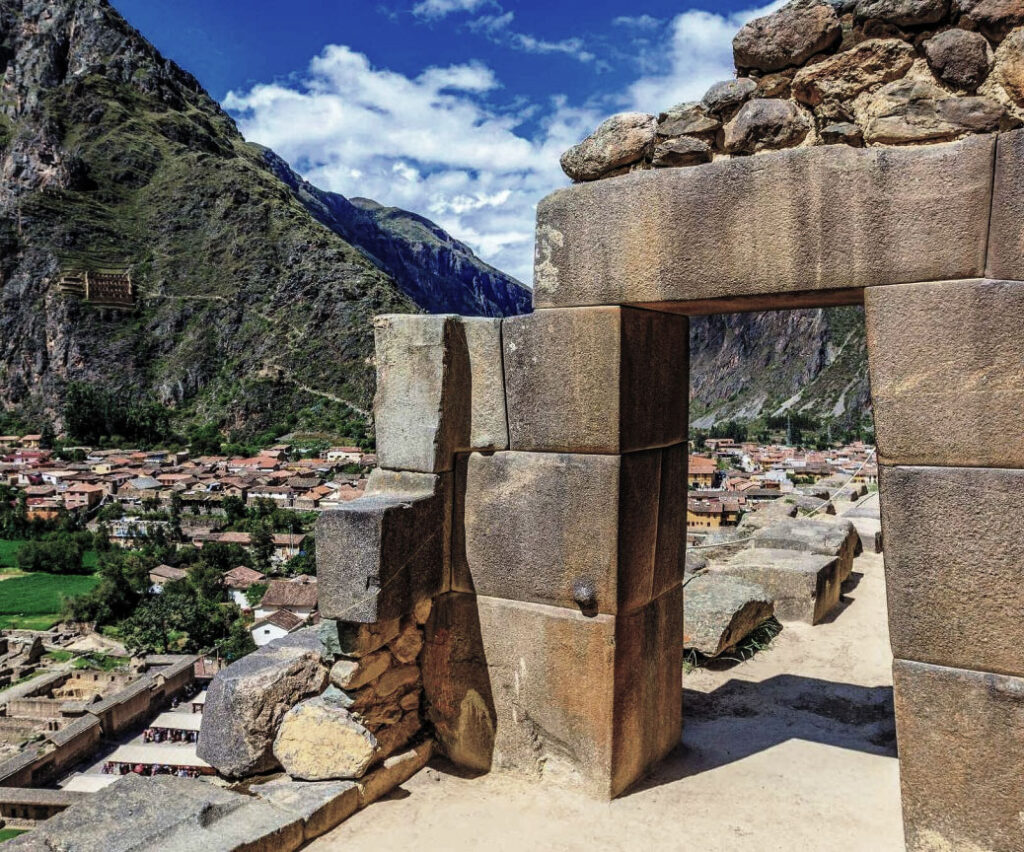
Ollantaytambo is a small town located in the Sacred Valley of the Incas, in the Andean region of Peru. The town is home to one of the most impressive Inca fortresses in Peru, and it is a popular destination for tourists who want to explore the history and culture of the Inca Empire. In this article, we will delve into the history and significance of Ollantaytambo, examining what we know about this remarkable fortress and the secrets that it still holds.
The History of Ollantaytambo
Ollantaytambo was built by the Incas in the late 15th century, during the reign of the emperor Pachacuti. The site was originally used as a royal estate, but it was later converted into a fortress to protect the Inca Empire from the invading forces of the Spanish conquistadors.
One of the most impressive features of Ollantaytambo is its extensive system of agricultural terraces. These terraces, which are still in use today, allowed the Incas to farm in the otherwise inhospitable mountain terrain. The terraces also provided a natural defense against invading forces, making it difficult for attackers to penetrate the fortress.
In addition to its agricultural terraces, Ollantaytambo is also home to a series of impressive structures, including a temple complex and a system of water channels and fountains. The temple complex, which is located on the upper terraces of the fortress, is composed of a series of stone buildings, including a large central temple and a number of smaller rooms and courtyards.
The Significance of Ollantaytambo
Ollantaytambo is a testament to the ingenuity and creativity of the Inca Empire, and its significance extends far beyond its impressive architecture and agricultural terraces. The site is also significant for its role in the Spanish conquest of Peru, which began in the 16th century.
In 1536, a group of Inca rebels led by Manco Inca launched a rebellion against the Spanish in Cusco, the capital of the Inca Empire. Manco Inca and his followers fled to Ollantaytambo, where they were able to hold off the Spanish forces for several months. However, in the end, the Spanish were able to overcome the defenses of Ollantaytambo, and the site fell to their forces.
Despite its eventual defeat, Ollantaytambo remains a symbol of resistance and defiance against the forces of colonialism. The site is now a UNESCO World Heritage site and a popular tourist destination, and it continues to inspire awe and wonder in visitors from around the world.
In conclusion, Ollantaytambo is a remarkable example of Inca engineering and architecture, and its history is a testament to the ingenuity and resilience of the Inca Empire. Whether you're interested in the history of the Spanish conquest or simply looking for a remarkable travel destination, Ollantaytambo is not to be missed. From its impressive agricultural terraces to its stunning temple complex, Ollantaytambo is a fascinating chapter in Peru's rich history.
Cusco City: Exploring the Heart of the Inca Empire
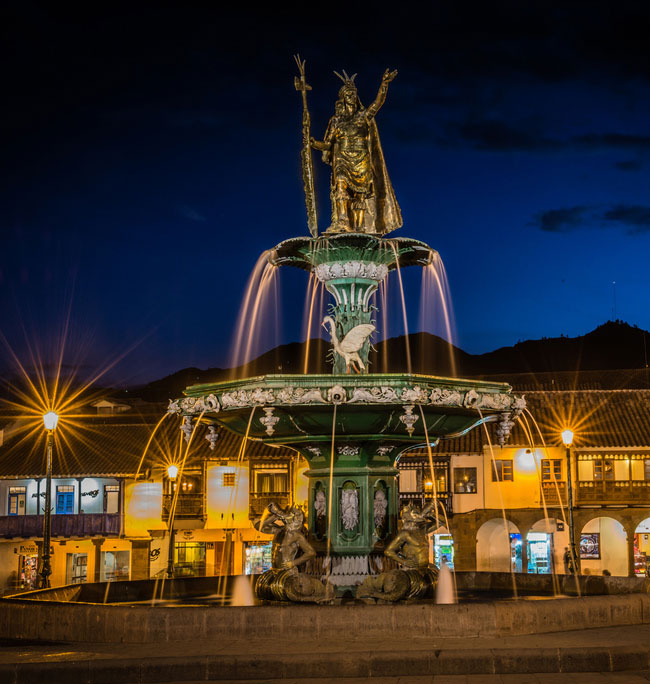
Cusco City is a historic city located in the southeastern region of Peru. The city was once the capital of the Inca Empire and is now a UNESCO World Heritage site and a popular destination for tourists who want to explore the history and culture of Peru. In this article, we will delve into the history and significance of Cusco, examining what we know about this remarkable city and the legacy that it has left behind.
The History of Cusco City
Cusco City was founded in the early 12th century by the Inca people, who quickly established it as the capital of their empire. The city was considered the most important city in the Inca Empire, and it was home to many of the empire's most impressive buildings and monuments.
One of the most impressive features of Cusco City is its extensive system of stone walls and buildings. The Inca people were known for their skill in stone masonry, and many of the buildings in Cusco are made of large, precisely cut stones that fit together without mortar.
Cusco City was also home to a number of important temples and religious buildings, including the Temple of the Sun and the Temple of the Moon. These temples were considered to be some of the most important religious sites in the Inca Empire, and they were believed to be the center of the Inca religious universe.
The Significance of Cusco City
Cusco City is significant for many reasons, both in terms of its history and its cultural significance. The city played a central role in the Inca Empire, and many of its buildings and monuments continue to inspire awe and wonder in visitors today.
In addition to its history, Cusco City is also significant for its cultural significance. The city is home to a number of important festivals and celebrations, including the Inti Raymi festival, which celebrates the winter solstice and is considered one of the most important festivals in South America.
Cusco City is also home to a number of museums and galleries, which showcase the city's rich history and culture. Visitors to Cusco City can explore the Museum of Pre-Columbian Art, which houses a collection of pre-Columbian art and artifacts, or visit the Centro de Textiles Tradicionales del Cusco, which showcases the city's rich textile traditions.
In conclusion, Cusco City is a remarkable city that has played an important role in the history and culture of Peru. From its impressive stone walls and buildings to its important religious sites and festivals, Cusco City is a fascinating destination for anyone interested in the history and culture of South America. Whether you're exploring the city's museums and galleries or simply wandering through its historic streets, Cusco City is not to be missed.
Pachacamac: Exploring the Sacred Site of the Andean Gods
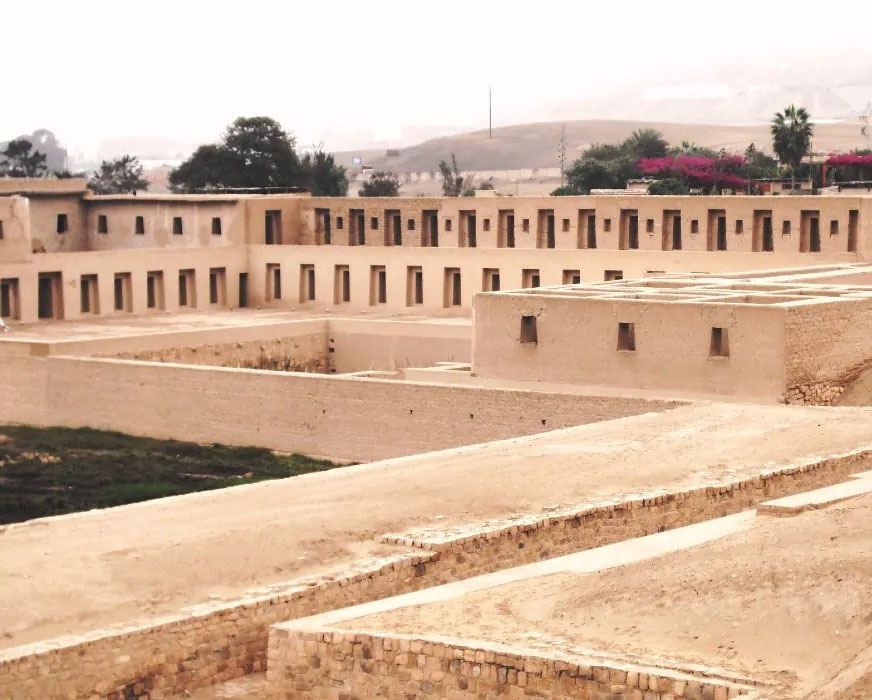
Pachacamac is an ancient archaeological site located on the coast of Peru, just south of Lima. The site was once an important religious center for the pre-Columbian cultures of the Andean region, and it is now a popular destination for tourists who want to explore the history and culture of the area. In this article, we will delve into the history and significance of Pachacamac, examining what we know about this remarkable site and the secrets that it still holds.
The History of Pachacamac
Pachacamac is believed to have been first settled around 200 CE by the Lima culture, a pre-Columbian civilization that flourished on the coast of Peru. The site was later occupied by the Wari and Huari cultures, before being taken over by the Inca Empire in the late 15th century.
One of the most impressive features of Pachacamac is its extensive system of pyramids and temples. The site is home to a number of large pyramids, as well as a series of smaller temples and courtyards. These structures were built by the pre-Columbian cultures of the Andean region, who believed that Pachacamac was a sacred site where they could communicate with the gods.
The Significance of Pachacamac
Pachacamac is significant for many reasons, both in terms of its history and its cultural significance. The site played an important role in the religious practices of the pre-Columbian cultures of the Andean region, and it is believed to have been a place of pilgrimage for people from across the area.
In addition to its religious significance, Pachacamac is also significant for its architecture and engineering. The pyramids and temples of Pachacamac are remarkable examples of pre-Columbian engineering, and they continue to inspire awe and wonder in visitors today.
Pachacamac is also home to a number of important artifacts and artworks, including ceramics, textiles, and gold objects. These artifacts provide a glimpse into the rich artistic and cultural traditions of the pre-Columbian cultures of the Andean region.
In conclusion, Pachacamac is a remarkable archaeological site that offers a window into the history and culture of the pre-Columbian cultures of the Andean region. Whether you're interested in the site's religious significance or simply looking for a remarkable travel destination, Pachacamac is not to be missed. From its impressive pyramids and temples to its important artifacts and artworks, Pachacamac is a fascinating chapter in Peru's rich history.
Chan Chan: Exploring the Capital of the Chimu Empire
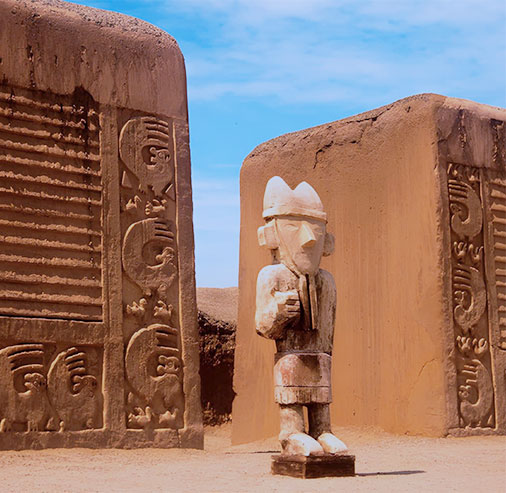
Chan Chan is an ancient archaeological site located in the north of Peru, near the city of Trujillo. The site was once the capital of the Chimu Empire, a pre-Columbian civilization that flourished in the area between 850 CE and 1470 CE. Chan Chan is one of the largest and most impressive archaeological sites in South America, and it is a popular destination for tourists who want to explore the history and culture of the area. In this article, we will delve into the history and significance of Chan Chan, examining what we know about this remarkable site and the legacy that it has left behind.
The History of Chan Chan
Chan Chan was founded in the 9th century by the Chimu people, who quickly established it as the capital of their empire. The city was built using adobe bricks, and it covered an area of over 20 square kilometers. At its height, Chan Chan was home to over 30,000 people, making it one of the largest cities in South America.
One of the most impressive features of Chan Chan is its extensive system of walls and buildings. The city is composed of a series of large, rectangular compounds, each of which is surrounded by a high wall. These compounds were used for a variety of purposes, including housing, storage, and administrative functions.
Chan Chan is also home to a number of important temples and religious buildings, including the Tschudi Complex and the Nik-An Palace. These buildings were considered to be some of the most important religious sites in the Chimu Empire, and they were believed to be the center of the Chimu religious universe.
The Significance of Chan Chan
Chan Chan is significant for many reasons, both in terms of its history and its cultural significance. The city played a central role in the Chimu Empire, and many of its buildings and monuments continue to inspire awe and wonder in visitors today.
In addition to its history, Chan Chan is also significant for its artistic and engineering value. The city is home to a number of impressive works of art, including ceramics, textiles, and gold objects. These artifacts provide a glimpse into the rich artistic and cultural traditions of the Chimu people, and they are an important part of the site's significance.
Chan Chan is also home to a number of important conservation efforts. The site is at risk of damage and erosion due to its location in a desert environment, and conservationists are working to preserve the city's walls and buildings for future generations.
In conclusion, Chan Chan is a remarkable archaeological site that offers a window into the history and culture of the Chimu people. Whether you're interested in the site's impressive walls and buildings or its rich artistic and cultural traditions, Chan Chan is not to be missed. From its impressive temples and palaces to its important artifacts and artworks, Chan Chan is a fascinating chapter in Peru's rich history.
Chavín de Huantar: Exploring the Ancient Spiritual Center of Peru

Chavín de Huantar is an archaeological site located in the central highlands of Peru. The site was once an important religious and cultural center for the pre-Columbian cultures of the Andean region, and it is now a popular destination for tourists who want to explore the history and culture of the area. In this article, we will delve into the history and significance of Chavín de Huantar, examining what we know about this remarkable site and the secrets that it still holds.
The History of Chavín de Huantar
Chavín de Huantar was founded around 900 BCE by the Chavín people, a pre-Columbian culture that lived in the area between 900 BCE and 200 BCE. The site was located in a strategic location that allowed it to control trade routes and maintain political power in the region.
One of the most impressive features of Chavín de Huantar is its extensive system of underground tunnels and passageways. The tunnels were used for a variety of purposes, including religious ceremonies, and they are home to a number of impressive works of art, including carvings and sculptures.
Chavín de Huantar is also home to a number of important temples and religious buildings, including the Old Temple and the New Temple. These buildings were considered to be some of the most important religious sites in the Andean region, and they were believed to be the center of the Chavín religious universe.
The Significance of Chavín de Huantar
Chavín de Huantar is significant for many reasons, both in terms of its history and its cultural significance. The site played an important role in the religious and cultural practices of the pre-Columbian cultures of the Andean region, and it is believed to have been a place of pilgrimage for people from across the area.
One of the most fascinating aspects of Chavín de Huantar is its art and architecture. The site is home to a number of impressive works of art, including carvings and sculptures, that provide a glimpse into the rich artistic and cultural traditions of the Chavín people.
Chavín de Huantar is also significant for its engineering and construction. The site is a remarkable example of pre-Columbian engineering, and it continues to inspire awe and wonder in visitors today.
In addition to its historical and cultural significance, Chavín de Huantar is also important for its conservation efforts. The site is at risk of damage and erosion due to its location in a mountainous environment, and conservationists are working to preserve the site's structures and artifacts for future generations.
In conclusion, Chavín de Huantar is a remarkable archaeological site that offers a window into the history and culture of the pre-Columbian cultures of the Andean region. Whether you're interested in the site's impressive underground tunnels and passageways or its rich artistic and cultural traditions, Chavín de Huantar is not to be missed. From its impressive temples and buildings to its important artifacts and artworks, Chavín de Huantar is a fascinating chapter in Peru's rich history.
The Peruvian Amazon Rainforest: A Natural Wonder
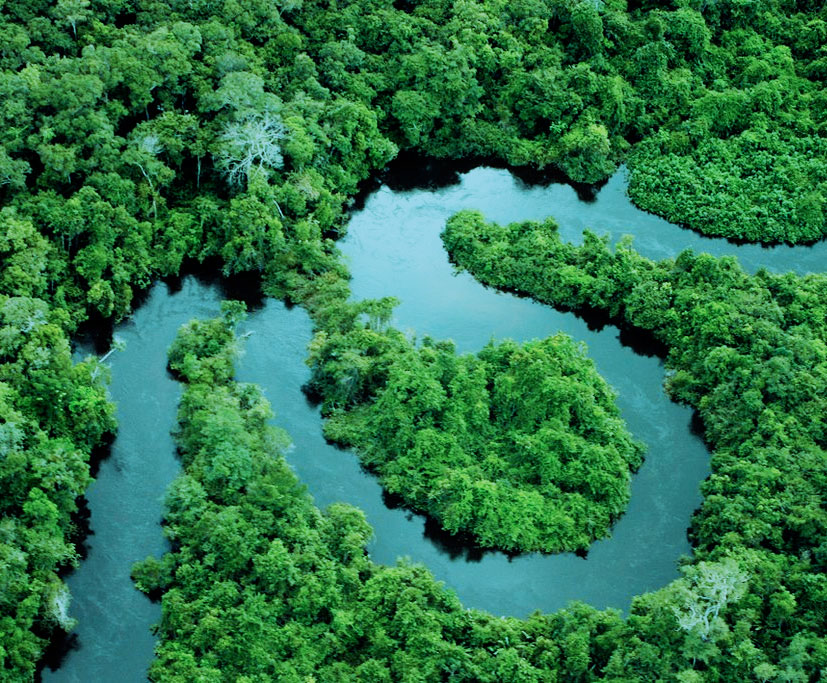
The Peruvian Amazon rainforest is a vast and biodiverse ecosystem that covers over 60% of Peru's land area. It is home to thousands of plant and animal species, many of which are found nowhere else in the world. The Amazon rainforest is not only an important natural resource but also a vital cultural and spiritual center for the people who live in the region. In this section, we will explore the natural wonders and cultural significance of the Peruvian Amazon rainforest.
The Natural Wonders of the Peruvian Amazon Rainforest
The Peruvian Amazon rainforest is one of the most biodiverse ecosystems on the planet, with over 10,000 plant species and thousands of animal species. The region is home to iconic wildlife, such as jaguars, giant otters, and macaws, as well as lesser-known species, such as the pink river dolphin and the hoatzin bird. The rainforest is also home to millions of insects, including the famous leaf-cutter ants, whose intricate colonies can be seen throughout the forest.
One of the most impressive features of the Amazon rainforest is its immense size. The region covers over 60% of Peru's land area, and it stretches across several other countries in South America, including Brazil and Colombia. The Amazon River, which flows through the heart of the forest, is the largest river in the world by volume, and it is an important source of water and transportation for the people who live in the region.
The Cultural Significance of the Peruvian Amazon Rainforest
The Peruvian Amazon rainforest is not only a natural wonder but also a vital cultural and spiritual center for the people who live in the region. The forest is home to dozens of indigenous communities, many of whom have lived in the area for thousands of years. These communities have developed unique cultures and traditions that are closely tied to the natural environment.
For many indigenous communities in the Amazon rainforest, the forest is not only a source of food and shelter but also a spiritual center. Many communities believe that the forest is home to powerful spirits and deities, and they use traditional medicines and practices to connect with these spirits and maintain balance and harmony in the natural world.
The Amazon rainforest is also an important economic resource for the people who live in the region. Many communities rely on the forest for their livelihoods, including hunting, fishing, and gathering. However, the rapid pace of deforestation and industrial development in the region has put these livelihoods at risk, and many indigenous communities are struggling to maintain their way of life in the face of these challenges.
In conclusion, the Peruvian Amazon rainforest is a natural wonder that is home to thousands of plant and animal species and has significant cultural and economic importance for the people who live in the region. As the world faces growing environmental challenges, it is more important than ever to protect and preserve this vital ecosystem and support the communities that rely on it for their survival.
Conservation Efforts in the Peruvian Amazon Rainforest
The Peruvian Amazon rainforest is under threat from deforestation, mining, and other forms of industrial development. The loss of habitat is a major threat to the many plant and animal species that call the rainforest home, and it also has a devastating impact on the people who live in the region.
Fortunately, there are many conservation efforts underway to protect and preserve the Peruvian Amazon rainforest. The Peruvian government has established several protected areas in the region, including national parks and reserves, which aim to safeguard the biodiversity and cultural heritage of the area. These protected areas cover over 22% of Peru's land area and are home to some of the most important and threatened ecosystems in the region.
In addition to government-led efforts, there are also many non-governmental organizations and community-based initiatives working to protect the Peruvian Amazon rainforest. These organizations work to empower local communities to take an active role in conservation efforts and to develop sustainable livelihoods that rely on the natural resources of the forest without causing harm to the environment.
One such initiative is the Sustainable Amazonian Foundation, which works with indigenous communities to develop sustainable agriculture practices, support local ecotourism, and promote the conservation of traditional knowledge and culture. Another organization, the Amazon Conservation Association, works to protect the biodiversity of the region by creating and managing protected areas, promoting sustainable livelihoods, and engaging in scientific research.
Conclusion
The Peruvian Amazon rainforest is a natural wonder of incredible beauty and diversity, and it has significant cultural and economic importance for the people who live in the region. However, the region is under threat from deforestation, mining, and other forms of industrial development, which puts the many plant and animal species and indigenous communities at risk.
It is essential that we work to protect and preserve the Peruvian Amazon rainforest, and support the many conservation efforts that are currently underway. By doing so, we can help to ensure that this unique ecosystem and its many wonders are preserved for future generations to enjoy and appreciate.
